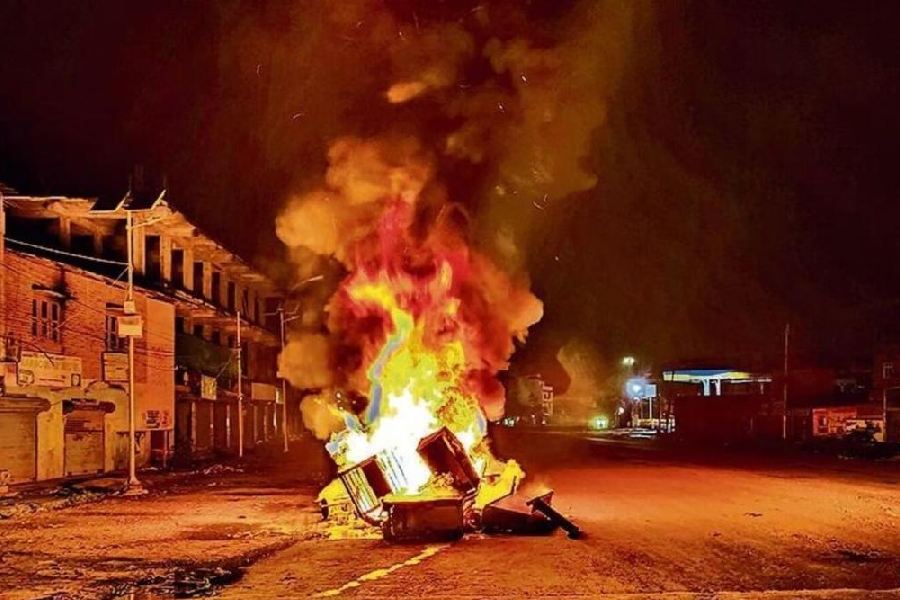Book: SHOOTING THE SUN: WHY MANIPUR WAS ENGULFED BY VIOLENCE AND THE GOVERNMENT REMAINED SILENT
Author: Nandita Haksar
Published by: Speaking Tiger
Price: Rs 399
Nandita Haksar’s book, on the ongoing ethnic clashes in Manipur between Meiteis and Kuki-Zo communities, is yet another volume flying out of the ‘fast book’ counter, beating the conclusion of a three-member official enquiry into the tragedy headed by a retired chief justice of the Gauhati High Court.
The Goa-based author admits that the book went to press in October, six months into the crisis; therefore, its writing would have begun even earlier. Understandably, except for the last two chapters, one, an informative profile of Manipur’s complex ethnic mosaic, and the other, a summary of the turmoil in neighbouring Myanmar and its reverberations across the border in India together with a short Afterword — a prayer for return of normalcy to the state — the rest can be summarised as such: long on conjectural presumptions but woefully short on documentation and evidence.
The methodology is peculiar. The author took residence in Imphal for two years during the late 1980s, fighting a court case against the Assam Rifles for atrocities committed in Naga villages in the Senapati district during a campaign codenamed Operation Bluebird. The impression she gathered of Manipur’s volatile ethnic relations during the period, as well as from her association with the state through a marriage with a Tangkhul Naga from Ukhrul, is what she sees being reinforced in the present crisis. Her evidence is based largely on media reports cherry-picked to suit her chosen narrative.
The book has plenty of details about gory and savage murders. It also takes its title from a Meitei folk tale in which the earth once had two suns and a warrior bowman shot down one so as to create night to alternate with day. The suggestion seems to be that Meiteis are the aggressors and Kuki-Zos the victims. Almost all the gruesome cases of atrocities selected and retold from newspaper reports refer to those committed by Meiteis.
But Kuki-Zos would not be altogether pleased either. For Haksar says things like church-burning was started by Kuki-Zos in Churachandpur while attacking Meitei Christians there before the carnage spread to Imphal. Likewise, she says Kuki-Zos have been trying to wrest control of the border trading town of Moreh by pushing the Nagas out in 1993, then Tamils in 1995; and, now, they have turned their attention to Moreh’s Meitei residents. The author also contends that one of the roots of the problem concerns claims of imaginary ethnic homelands, highlighting the migratory nature of Kuki-Zos, and how even Nagas are opposed to Kuki-Zos claiming the places where they are now settled as their ancestral land.
Surprisingly, the author does not hesitate to use hearsay as evidence. She approvingly repeats claims that security forces, the Assam Rifles in particular, are involved in Manipur’s poppy menace, albeit qualifying them with “allegedly”. She also quotes at length an article published in a web portal that cites an unnamed informant claiming that the Chinese drug mafia has used drug money to influence Central and state policy-makers to keep the ground fertile for the narco trade at the cost of deadly ethnic feuds. On September 14, the state government announced the official death toll to be 175. An outraged Haksar argues that 200 Meiteis supposedly killed at Khamenlok village — their bodies had been hidden so that families were unaware of their fate — had not been included. As evidence of the massacre, she cites the claim of a Kuki politician in a television interview.
The book is akin to a lawyer pushing a case, with little appreciation of the possible existence of other explanations for the same events. What is missing is a dialectical quest for the roots of the problems.










